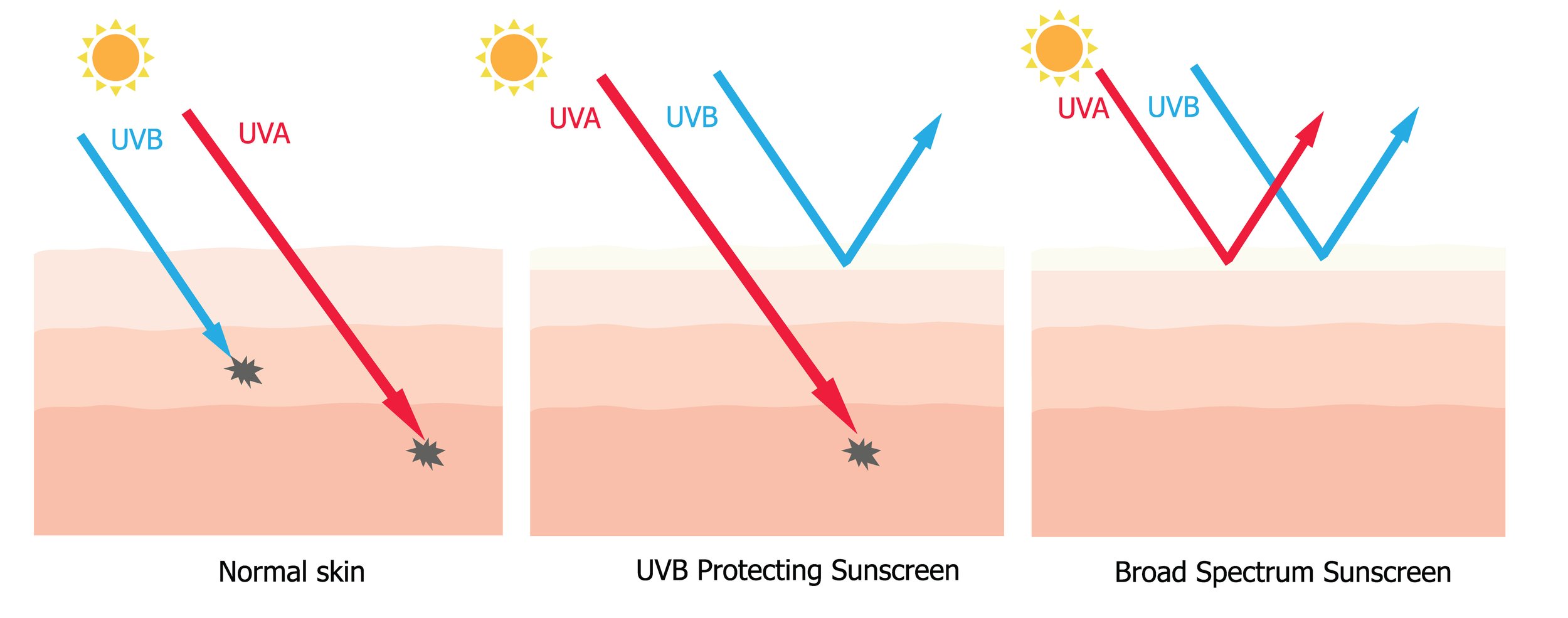Time to shop for sunscreen!
April is the perfect time to be sure you have fresh sunscreen ready for those random 80’ days we’ll see and the coming regular sunny days ahead.
We’ve come so far with knowledge of sunscreen which is great! I’ll break down some important aspects here along with the vocabulary you’ll need to know.
#1 UVA, UVB and UVC rays UVC rays usually get blocked by the ozone layer so we rarely get any here on earth. This is a great reason to protect our ozone layer! Some UVB rays are blocked by the ozone layer but the rest make it down here and penetrate the outer layer of our skin. UVA rays are the worst. These are the majority of rays you get on your skin and they can penetrate to the middle of our skin.
We need to use Broad Spectrum sunscreen to protect us from all of these kinds of rays.
#2 Physical vs. Chemical sunscreen
I only use and sell “physical” sunscreens and I’ll tell you why.
“Physical” sunscreens are made with the minerals zinc oxide and/or titanium dioxide. As crushed up minerals, they sit on your skin, they don’t absorb into your skin which is a good thing. They work by reflecting the UV rays off of your skin.
Synthetically created “chemical” sunscreen ingredients absorb UV rays thus interacting with your skin. As one product creator told me “they absorb the sun rays and turn them into something not harmful”. This reaction taking place on your skin isn’t something I’m convinced is a good idea.
We need to use Physical sunscreen to bounce these harmful rays off of our skin.
Now don’t forget, we are not smarter than the sun. Some rays will still get to us no matter how hard we try to block them. Did you know the term sun block is not allowed anymore for this very reason?
I could go on and on about sunscreens but I will leave it at this for now and resume with more information in another sunscreen blog.
Peruse my current favorite Broad Spectrum, Physical, AND water resistant sunscreens here.
Enjoy.




